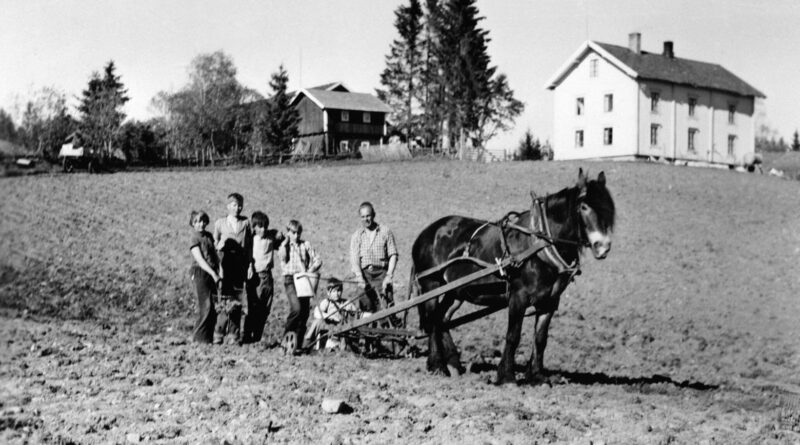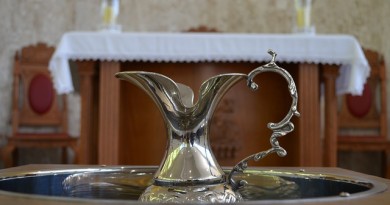Who was the “Leiglending”
When searching for Norwegian ancestors many of us find farmers described as a leiglending. What did this mean?
Leilending is an older word for a person who rents land. The designation probably goes back to the Viking Age. The Old Norse form is leiglendingr, derived from the verb leiga, meaning “to rent”, and the noun land.
Other words for leiglending are bygslingsmann, bygsler/bøgsler. In this article, I will use the English expression tenant/tenant farmer to describe the leiglending.
There are distinct differences between a leiglending and a husmann (cotter). You might want to have a look at my article Who was the husmann. The husmann rented a smaller piece of land that was not a separate unit in the land records. The land rented by a leiglending was a farm or farm part that was judicially an independent unit. In addition, the leiglending had, as we shall see, more extensive rights when it came to what he could do on the farm.
From the 9th and 10th centuries and up to 1350, the number of tenants increased. While a majority of farmers in various forms were independent farmers in the Viking Age, the majority were tenants in the early 14th century. At the same time, during this period there was a sharper distinction between political power and ownership of land. The tenancy became more and more a material-economic relationship, and personal relationships of a political nature between powerful landowners and tenants and freeholders became less important.
The number of tenant farmers increased until the end of the 17th century, when more and more farmers were able to buy to the farm they rented and became freehold owners. The reason for this is that government regulations that was put in place at this time made it less lucrative for the landowners to lease out their land.
The tenancy system disappeared during the 19th century. A person who rents an agricultural property today is called a forpakter (SNL) .
Who owned the land
Since so many were tenant farmers I just want to mention briefly who owned the land. In an overview taken from Sevatdal (Sevatdal: 44) we find the following percentages based on a land survey (Landkommisjonen) published the year 1661.
- Private land used by the owners: 19%
- Private land used by tenant farms: 21%
- Land owned by the Nobililty 8%
- Land owned by the Crown 31%
- Land owned by the church 21%
This is an average for the entire country of Norway. The numbers varied in different parts of the country.
The conditions of the tenancy
The tenancy system (Leiglendingsvesenet) does, as we have seen, go back to the Viking age. Of most interest to us is King Christian V’s Norwegian law of 1687 that gives detailed laws and regulations regarding tenant farmers. The following details are for the most part based on the regulations given in this law. I have also been helped by Vaksdal Bygdebok by Brita Skre page 128-129.
The agreement was valid for the tenant’s lifetime. If the tenant died, his widow could continue the contract for her lifetime. If she choose to re-marry, and wanted to keep the farm, her new husband had to sign a new tenant contract with the landowner. The tenancy was in most cases inheritable. The landrent had to be paid every year before Christmas eve. If the rent was not paid in time there could be fines to pay. In addition to the yearly land rent, there was normally a fee paid when the contract was signed (førstebygsel). Also, every third year there was an extra fee (tredjeårsrake).
 The rent was normally paid in natural gods. These goods could be grain, fish, butter or hides. Many landowners wanted their tenants to pay in money. Many tenants did, but they could not be forced to do so.
The rent was normally paid in natural gods. These goods could be grain, fish, butter or hides. Many landowners wanted their tenants to pay in money. Many tenants did, but they could not be forced to do so.
The rent could be adjusted up or down, but this could only be done after a courthearing by the magistrate and a number of lay judges who surveyed the farm.
The landowner could sell the land, but this did not change any of the conditions in the contract. If the tenant wanted to buy the land he had first priority.
Going back to the contract; They differed a lot. It could contain a number of standard conditions:
- How much land rent was to be paid.
- The contract often says that the farm is let with “hus og herberge”. This means that the tenants has the right to all the resources that is connected to the farm. In addition to the obvious houses this could be hunting and/or fishing rights, or grasing for animals in the outfields/mountains. It should be mentioned though, that there normally were some limitations to how the tenant could exploit these resources.
- The contract might say that the tenant shall show his landlord loyalty and obedience.
- The tenant had to keep the houses and fences on the farm in good condition. If he failed to do so he would have to pay a fine (åbot). I have seen contracts that mentions that the tenant is required to also keep the arrable land in good condition.
- The contract normally mentioned that in addition to the land rent, the tenant was required to pay any taxes imposed by the government, pay the titering to the church and the military contribution tax.
- If the farm had woodland, the contract would specify how much of this the tenant could use yearly for materials and firewood.
- Some contracts mentions that the tenant can, if given permission by the landowner, let cotters reside on the farm.
- The contract often gives instructions that the tenant has to follow if he want to terminate the lease and leave the farm.
- The landlord could terminate the lease if there were grave breaches in the agreement.
Many tenant contracts have a clause about support for the tenants in sickness or old age, You might want to read my article The pension of the past. This support was provided by whoever took over the lease. This could be a child or a new tenant unrelated to the couple.
I have throughout this article talked about “the tenant”. Only in the last paragraph I hint at the fact that it in most cases was a couple who ran the farm.
Some time ago I was asked by a friend if marriage was a requirement to obtain a tenant contract. I find no sources that support this notion. We can say that marriage was, if not a necessity, a preferable situation. If we look at the farm as a production company, which it in fact was, the wife and husband were “heads of different departments” in this company. Based on this we see that farmers, be it, owners or tenants were usually married, and if a spouse passed away the widow(er) often remarried very soon. This being said I have also seen singles running a rented farm with the help of hired hands.
I hope this gives you an overview of the system of tenant farmers (leiglendinger) in Norway. One could write an entire book on the topic so there are probably some details that could have been elaborated.
Please comment below or send me a mail if something needs clarification.
Sources
Honerød, Anne Grete, Nedrebø, Reidar Marcus Gerhard Hoff-Rosenkrone : 1823-1896 Baroniet Rosendal, 1996
Mejlænder, Otto Kong Christian den Femtes Norske Lov av 15de April 1687, Malling 1871 (The third book chapter 14 in this law covers the tenancy system)
Sevatdal,Hans et. al. Eigedomshistorie Universitetsforlaget (Oslo) 2018
Skre, Brita: Vaksdal Bygdebok Band IV Vaksdal bygdeboknemd 1987
Store Norske Leksikon (SNL)






Wonderful, informative article, Martin. Tusen tak!